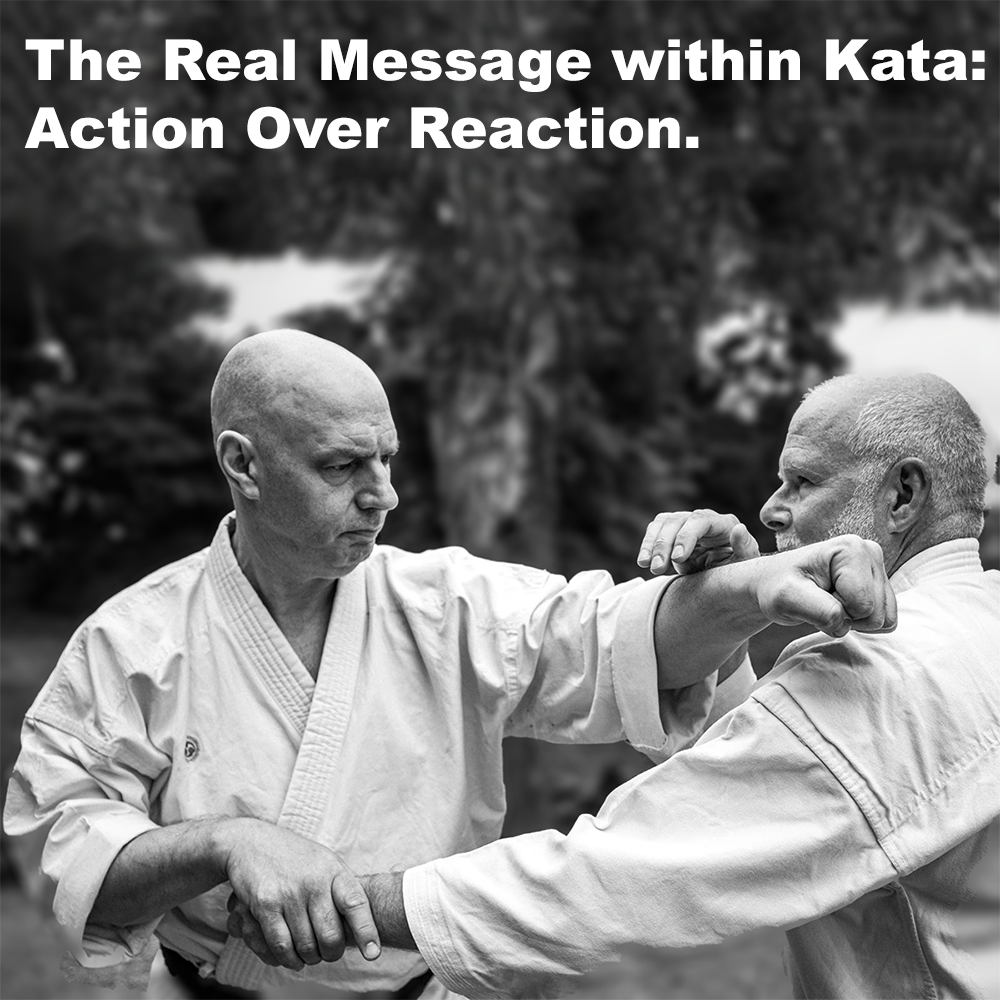
(Approx 2 minute 25 second read)
One of the first movements you learn when beginning the study of karate is a block.
.
You are taught to block from day one and to practice blocks at every class until they become a habit and ultimately become an almost unconscious reflex.
.
This philosophy and its methodology are considered fundamental to karate. All of the major karate proponents tell us the same thing. It’s the way we were taught, the way we train, and the way we teach: block, and practice until it’s automatic – with no conscious thought or mindful effort, just a spontaneous reflex to an attack.
.
Actually, blocks are intuitive. An untrained person will instinctively throw their hands up to protect the face or eyes, or try to knock something aside. So karate takes an instinctive reaction and reformulates it into a few very specific movements, then drills those movements until they are ingrained and occur reflexively. No choice, no hesitation.
.
It’s well established that when under pressure we will react as we have trained. As an example, what would happen if we respond to a baseball bat or a crowbar coming down toward our head with a rising block?
.
The simple fact is that you may respond as you’ve trained, and in this case it may not be a wise decision.
.
I have personally witnessed a very experienced and capable senior dan-ranked instructor attempt to block an oak Bo (6 foot staff) when confronted suddenly in this way. Not a good idea.
.
And how likely is it, really, that in a real scenario an attacker will come at you empty handed? Far more likely, someone who intends to cause you harm or render you unable to fight will come swiftly and with a weapon. And our response is to block?
.
Modern karate training simply isn’t designed nor taught for real-world life-or-death encounters. Sorry, but it just isn’t.
.
Not only have we been trained to block everything that comes within a certain range, we are trained to block and then counter. For competition that makes sense. But the emphasis on blocking is reinforced again and again through the “block first and counter” mindset and the endless practice of that formula.
.
That mindset has consequences. For the purpose of understanding kata, it means we have been extensively trained to always think you have to wait to block before you respond when trying to interpret a movement, and invent an attack to fit. It’s the way we’ve been programmed.
.
But kata does not reflect that programming. Kata teaches real-world violence and how to initiate the action rather than react to it. We know that action is always faster than reaction. Doesn’t it make sense that the vast majority of kata movements are offensive techniques?
.
Modern karate training and its reliance on empty-hand attacks leaves us unprepared to interpret kata through the lens of real-world violence. The interpretations handed down to us – shaped by competition and sanitized for safety – have greatly hindered our ability to decipher kata’s true message. We’ve been carefully steered away from its violent but effective teachings.
.
It’s difficult to undo that conditioning. It’s hard to listen and truly hear, to observe and truly see. Yet when we change our mindset, it can open up a myriad of ideas.
.
That message has always been there, hiding in plain sight: kata doesn’t teach us to wait and block – it teaches us how to finish violence quickly.
.
.
Written by Adam Carter – Shuri Dojo
.
.
Photo Credit: With thanks to Don Came
